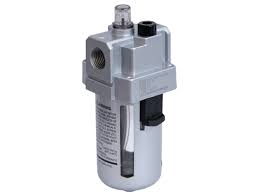Contact : +91-79045 61980 | Email: hydrofitengineers@gmail.com

Pneumatic air lubricators are devices used in pneumatic systems to inject a controlled amount of lubricating oil into the compressed air stream. They play a crucial role in maintaining the efficiency, reliability, and longevity of pneumatic components by reducing friction, wear, and corrosion. Here’s how pneumatic air lubricators work:
Function of Pneumatic Air Lubricators
- Lubrication: The primary function of a pneumatic air lubricator is to lubricate pneumatic components such as valves, cylinders, and air motors. Lubricating oil is injected into the compressed air stream, where it coats the internal surfaces of pneumatic components, reducing friction and wear during operation.
- Protection: In addition to lubrication, pneumatic air lubricators provide protection against corrosion and contamination. The lubricating oil forms a protective film on the internal surfaces of pneumatic components, preventing corrosion caused by moisture or other contaminants in the compressed air.
Components of Pneumatic Air Lubricators
- Body: The body of the lubricator houses the internal components and provides a housing for the adjustment mechanism and sight glass.
- Adjustment Mechanism: The adjustment mechanism allows operators to set the desired oil flow rate by turning a knob or screw. This mechanism varies the size of the orifice through which the lubricating oil is injected into the compressed air stream.
- Sight Glass: The sight glass provides a visual indication of the oil level in the lubricator, allowing operators to monitor the oil level and refill as needed.
- Filter: Some lubricators feature a built-in filter that removes contaminants such as dust, dirt, and moisture from the compressed air stream before it enters the lubricator. This helps ensure that only clean, filtered air and oil are supplied to pneumatic components.
- Oil Reservoir: The oil reservoir holds the lubricating oil, which is injected into the compressed air stream as needed. The reservoir may be refillable or disposable, depending on the design of the lubricator.
Working Principle of Pneumatic Air Lubricator
- Oil Injection: Compressed air enters the lubricator through an inlet port and flows through the internal components of the lubricator. As the air passes through, a small amount of lubricating oil is injected into the air stream through an orifice or atomizing nozzle.
- Mixing: The injected oil mixes with the compressed air, forming a fine mist or aerosol. This oil-air mixture flows downstream through the pneumatic system, coating the internal surfaces of pneumatic components with a thin film of lubricating oil.
- Adjustment: The operator can adjust the flow rate of the lubricating oil by turning the adjustment knob or screw on the lubricator. This allows for precise control over the amount of oil injected into the compressed air stream, ensuring optimal lubrication of pneumatic components.
Pneumatic air lubricators play a critical role in maintaining the performance and longevity of pneumatic systems by providing lubrication and protection to pneumatic components. They help reduce friction, wear, and corrosion, ensuring smooth and reliable operation of pneumatic equipment across various industrial applications.
